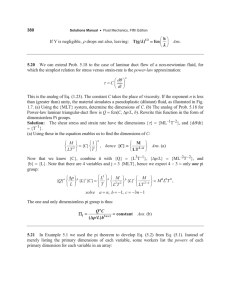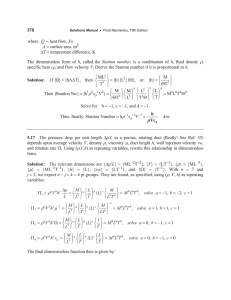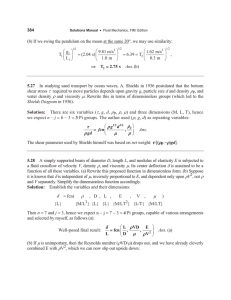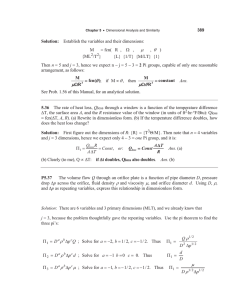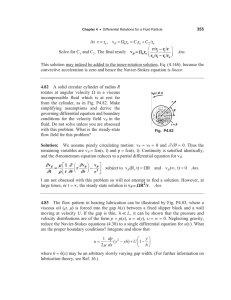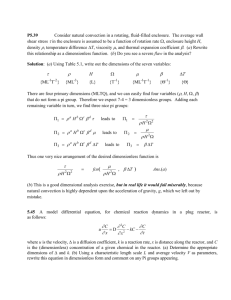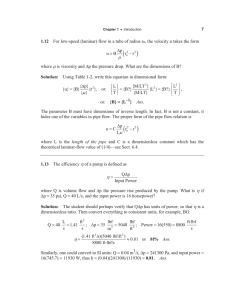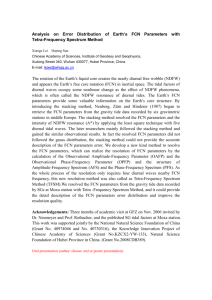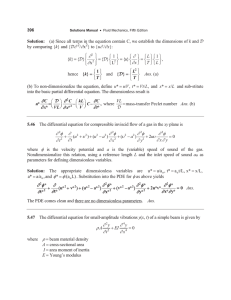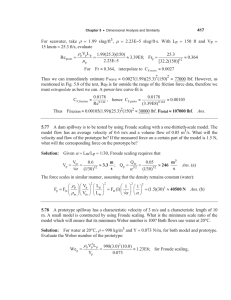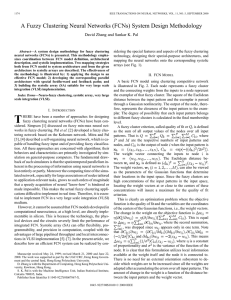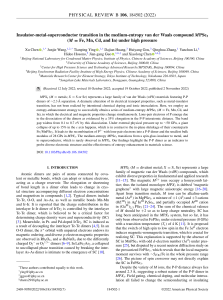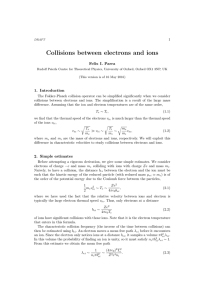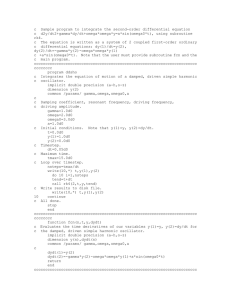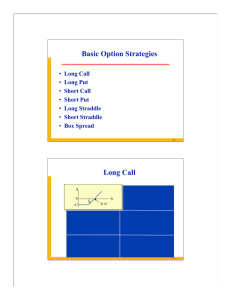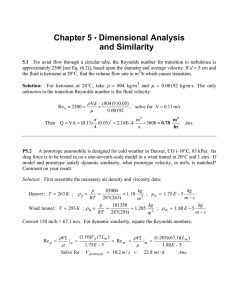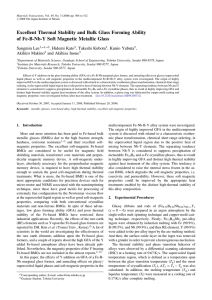U
advertisement
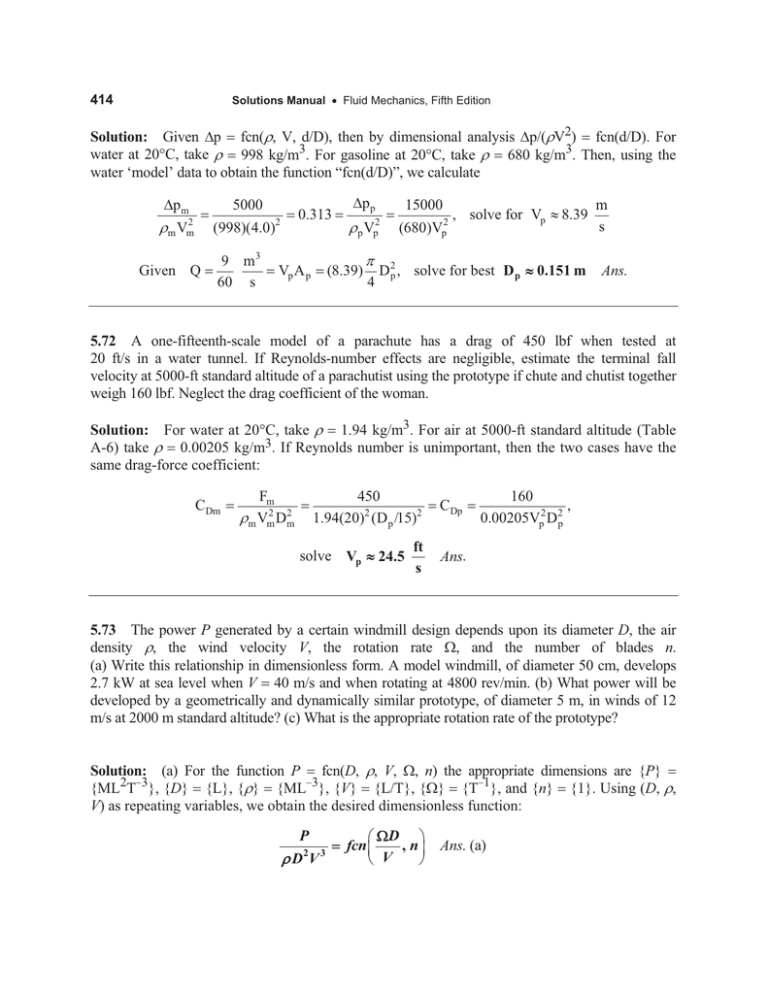
414
Solutions Manual x Fluid Mechanics, Fifth Edition
Solution: Given 'p fcn(U, V, d/D), then by dimensional analysis 'p/(UV2) fcn(d/D). For
water at 20qC, take U 998 kg/m3. For gasoline at 20qC, take U 680 kg/m3. Then, using the
water ‘model’ data to obtain the function “fcn(d/D)”, we calculate
'pm
Um Vm2
5000
(998)(4.0)2
Given Q
9 m3
60 s
0.313
Vp A p
'p p
Up Vp2
(8.39)
S
15000
m
, solve for Vp | 8.39
2
s
(680)Vp
D 2p , solve for best D p | 0.151 m
Ans.
5.72 A one-fifteenth-scale model of a parachute has a drag of 450 lbf when tested at
20 ft/s in a water tunnel. If Reynolds-number effects are negligible, estimate the terminal fall
velocity at 5000-ft standard altitude of a parachutist using the prototype if chute and chutist together
weigh 160 lbf. Neglect the drag coefficient of the woman.
Solution: For water at 20qC, take U 1.94 kg/m3. For air at 5000-ft standard altitude (Table
A-6) take U 0.00205 kg/m3. If Reynolds number is unimportant, then the two cases have the
same drag-force coefficient:
CDm
Fm
Um Vm2 Dm2
450
1.94(20)2 (D p /15)2
CDp
ft
s
Ans.
solve Vp | 24.5
160
,
0.00205Vp2 D2p
5.73 The power P generated by a certain windmill design depends upon its diameter D, the air
density U, the wind velocity V, the rotation rate :, and the number of blades n.
(a) Write this relationship in dimensionless form. A model windmill, of diameter 50 cm, develops
2.7 kW at sea level when V 40 m/s and when rotating at 4800 rev/min. (b) What power will be
developed by a geometrically and dynamically similar prototype, of diameter 5 m, in winds of 12
m/s at 2000 m standard altitude? (c) What is the appropriate rotation rate of the prototype?
Solution: (a) For the function P fcn(D, U, V, :, n) the appropriate dimensions are {P}
{ML2T3}, {D} {L}, {U} {ML3}, {V} {L/T}, {:} {T1}, and {n} {1}. Using (D, U,
V) as repeating variables, we obtain the desired dimensionless function:
P
U D 2V 3
§ :D ·
fcn ¨
, n ¸ Ans. (a)
© V
¹
